One of my absolute favorite domains for clerics is the Forge Domain. This is because they have some exciting flavor, unique mechanics, and a solid list of bonus D&D spells.
So, if you’re looking to play a strong Defender Cleric, one that is fascinated by magical items or has some unique and fun mechanics to take advantage of in combat, you want to consider playing a Forge Cleric. Here is our Forge Cleric 5e Guide with everything you need to know about this Cleric Domain.
Key Info Up Front
- Book: Xanathar’s Guide to Everything
- Feature Levels: 1, 2, 6, 8, 17
- Roles: Defender, Striker, Utility
- Example Deities: Hephaestus, Moradin, Gond
Forge Domain Cleric Overview
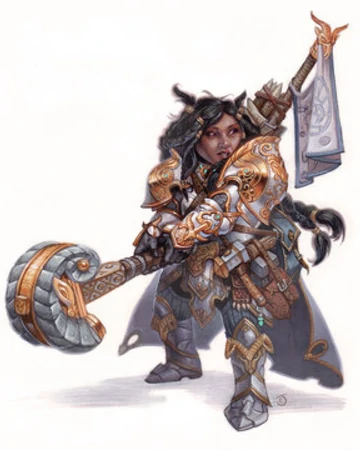
Clerics that take up the mantle of the Forge Domain are concerned with protecting the most powerful relics and magical items from dark forces throughout the world. They worship the gods that help create those magical artifacts or guide the hands of smiths and craftsmen.
During their adventures, they scour the land for rare materials, free magic items from the grips of dark forces, and even support others with their well-honed craft. Mechanically, the Forge Cleric is a frontlines combatant who excels at being a Defender for the party while maintaining decent damage output and some utility.
Ability Scores
Playing a Forge Cleric successfully does require some judicious use of your ability scores. Your absolute highest should be Wisdom, as it is the modifier for all of your spells and some of your features.
After Wisdom, your focus should be on Constitution to help you stay on your feet during the onslaughts of damage your character will have to endure.
After your two primary ability scores, I recommend putting a solid amount of points into your Strength, as the Forge Cleric can deal decent damage without using spells, and Strength will help you do so more effectively.
You’ll want to put some points into Charisma just in case you have to lie, persuade, or intimidate. Then, you can either do Dexterity or Intelligence, depending on your party’s needs.
I recommend only going with Intelligence if your party doesn’t have a strong knowledge-based character so that you can fill in some of the gaps like Religion and maybe Arcana.
Otherwise, focus on Dexterity first to help with saving throws since Forge Clerics get proficiency with heavy armor and won’t gain much AC from it.
Backgrounds
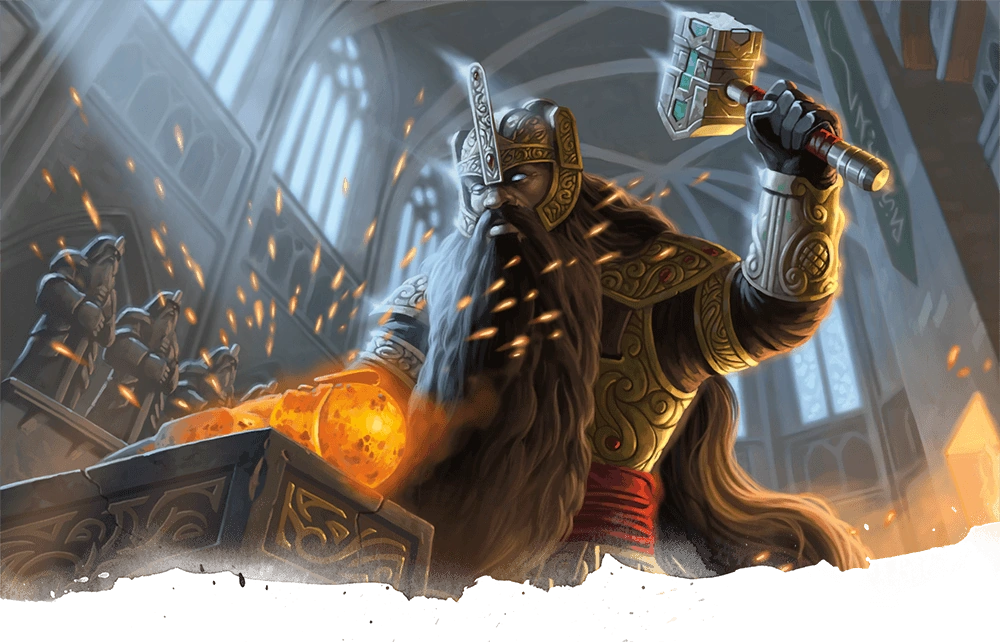
I recommend having your character’s background closely tied to the backstory you make for them. However, if you want to focus on your character’s stats or need some inspiration, some backgrounds work the best for the Forge Cleric.
These are some of the very best backgrounds for your Forge Cleric:
Acolyte
Book: Player’s Handbook
The Acolyte is the default background recommended for Clerics to use and is a strong fit for the Forge Cleric. It comes with proficiency in Insight and Religion and multiple languages.
This background is okay for a Forge Cleric, but you have better options unless you act as the party’s Face.
City Watch
Book: Sword Coast Adventurer’s Guide
The City Watch comes with proficiency in Insight and Athletics, but Athletics is a bit hard for Forge Clerics to take advantage of because of their heavy armor.
I also like this background for the Forge Cleric because it opens the door for some interesting background flavor regarding why a city guard took up the mantle of a Forge Cleric.
Faction Agent
Book: Sword Coast Adventurer’s Guide
The Faction Agent comes with Insight again, which is very useful while also coming with your choice of mental skill. The ability to pick is great so that you can pick up any skill that works well with the rest of your party, and the free language that the background comes with will also be helpful.
Hermit
Book: Player’s Handbook
The Hermit background comes with Medicine and Insight. Medicine isn’t useful at all, but Insight is, and it also comes with proficiency with a Herbalism’s Kit, which means that you’ll be able to make healing potions to support your party.
Skills
While Forge Clerics do come with some useful utility, none of that comes from their skill proficiencies. When you make a Cleric, you’ll be able to pick from five skills, and the ones you take proficiency in will be influenced heavily by what skills you gained from your background and what other members of your party are good at. However, here is my ordering to take the skills in.
- Insight: Uses Wisdom, so you’ll be able to back the skill up, and it is a powerful tool to tell whether or not you can trust NPC characters. This skill is an absolute must if your Dungeon Master likes running campaigns with many backstabbing or morally grey characters.
- Religion: While your Intelligence won’t be able to back up this skill too much, it is an important one for the class, and as a Cleric, you will likely be the main character in the party to try and make religion checks.
- Persuasion: Unless your party splits up a lot or doesn’t have a dedicated Face, you likely won’t use Persuasion too much, but it is still a very useful skill to use if you ever have to.
- History: History can be a useful knowledge skill if your Dungeon Master is prepared to fill in information about the world on successful checks, but you will likely have another party member that can cover this skill better than you can.
- Medicine: Don’t take Medicine unless you don’t have any other options. Healing should always be done with magic since it is always more efficient, and as a Cleric, you’ll have some healing options.
Forge Cleric Features
Forge Domain Spells
Level: 1
When you decide to devote yourself to the Forge Domain while making a Cleric character, you’ll get access to some extra spells that you can use throughout your campaign. The spells you’ll get are below.
- 1st Level: Identify, Searing Smite
- 3rd Level: Heat Metal, Magic Weapon
- 5th Level: Elemental Weapon, Protection from Energy
- 7th Level: Fabricate a Wall of Fire
- 9th Level: Animate Objects, Creation
Bonus Proficiencies
Level: 1
When you pick the Forge Domain, your Cleric will also get proficiency with heavy armor and smith’s tools in addition to the standard Cleric proficiencies.
Blessing of the Forge
Level: 1
This ability can be used once per long rest and allows you to enchant a weapon or piece of armor with the magic of your patron deity. When you do so, the equipment is given a +1 to its AC if it is armor or +1 to attack and damage rolls if it is a weapon. The effect lasts until the end of your next long rest or until you die.
Channel Divinity: Artisan’s Blessing
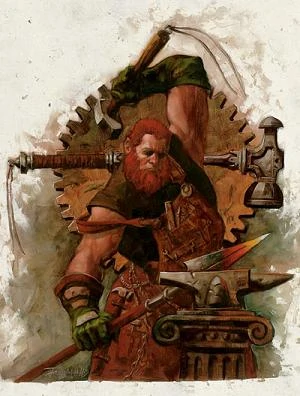
Level: 2
The Forge Domain also gives you a unique Channel Divinity feature that allows you to create nonmagical items. The item you create has to contain metal of some kind, cannot be magical in any way, and can only be worth up to 100 gold pieces.
Using this feature takes a full hour, and you have to have metal equal to the value of the item being created that is then shaped into the desired item.
Soul of the Forge
Level: 6
This feature helps boost your ability to stay on your feet, especially with a very rare boost to your AC. Once you reach the sixth level, you’ll get resistance to all fire damage and a +1 to your AC while wearing heavy armor, which you should be at all times as a Forge Cleric.
Divine Strike
Level: 8
This is the weakest feature the Forge Cleric gets, but it is still far from bad. It allows you to channel fiery magic into your weapon strikes once per turn. Mechanically, this allows you to add 1d8 fire damage onto your attack, which goes up to 2d8 when you reach level 14.
Saint of Forge and Fire
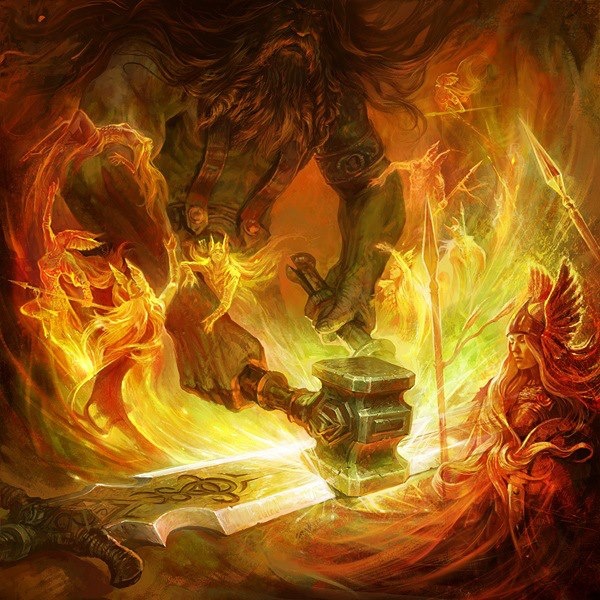
Level: 17
This feature is powerful and makes you a defender to be reckoned with. It gives you complete immunity to fire damage of all kinds and resistance to nonmagical bludgeoning, piercing, and slashing damage while you’re wearing heavy armor.
Forge Cleric Races
One of the great things about 5e is that you can be effective in any class or role while playing any of the game’s available races. However, if you want to make sure that your Forge Cleric is as able as possible, or if you want to cut down the extensive list of options available, here are the best races to pick as a Forge Cleric.
Aasimar (Protector)
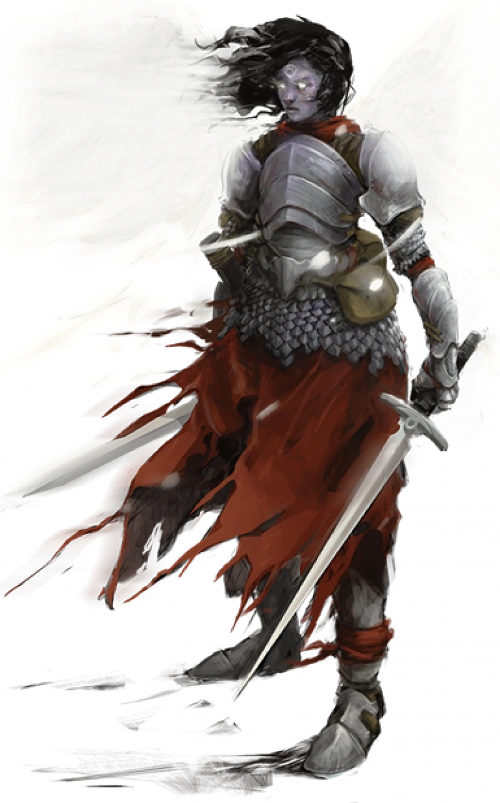
Book: Volo’s Guide to Monsters
This race works very well for the Forge Cleric as it gives you an innate boost to your Wisdom and a feature that allows you to fly, which is always useful. Its limited feature also gives you a great boost to your damage output, allowing you to rise to the occasion and shell out damage when you need to.
Hill Dwarf
Book: Player’s Handbook
While the Hill Dwarf doesn’t come with as many unique features as other races, it comes with an innate boost of Wisdom and increasing your hit points, which both help your Forge Cleric a lot even from early on.
Earth Genasi

Book: Mordenkainen Presents: Monsters of the Multiverse
The Earth Genasi comes with some strong spell options that Clerics normally don’t get access to, Blade Ward and Pass Without Trace. Blade Ward can help keep you on your feet in hairy situations, while Pass Without Trace allows you to travel through difficult terrain since you’ll have difficulty jumping over it with your heavy armor.
Goliath
Book: Mordenkainen Presents: Monsters of the Multiverse
The updated version of the Goliath is an excellent race for nearly all frontline builds, and the Forge Cleric is no different, especially considering Stone’s Endurance. However, most of its other features will go wasted, so you may be better off going with a different race from this list.
Satyr

Book: Mystic Odysseys of Theros
I don’t think many players will imagine a Satyr when picturing a strong Cleric Defender. However, its skill increases, two bonus skill proficiencies, and magic resistance make the race extremely durable. Their instrument proficiency won’t grant any mechanical benefit for your Forge Cleric, but it can bring some fun flavor to your character that you can integrate into your roleplay.
Warforged
Book: Eberron: Rising From the Last War
The Warforged is one of my favorite races for a Forge Cleric. Not only does a Warforged come with strong ability score buffs that you can put into Wisdom, but it also comes with numerous resistances and immunities.
With your heavy armor, you’ll also have an AC that manages to be higher than most casters can reach with spells while not having to use any of them. I also love the flavor that Warforged brings to the class since they are a magical creation of metal.
Forge Clerics Feats
As you level up, you’ll have the option to pick up feats, which can significantly specialize your character’s abilities and increase their power. So, if you want to take a feat while playing a Forge Cleric, here are my favorite options.
Fey Touched
Book: Tasha’s Cauldron of Everything
This feat gives your character access to misty steps, one of the most universally useful spells in all of D&D for movement. It only gives you one per day, but the additional 1st-level spell you get can be pretty helpful.
Gift of the Chromatic Dragon
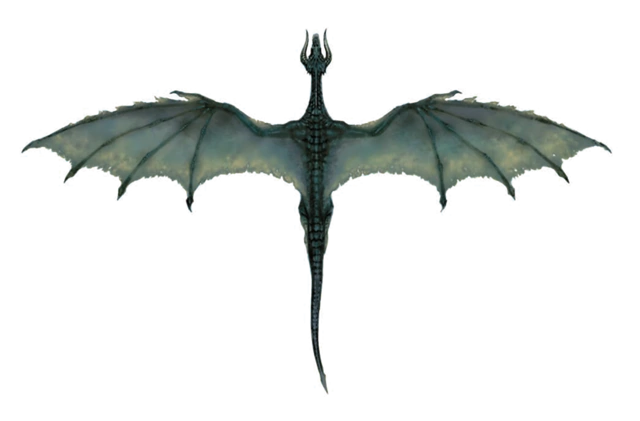
Book: Fizban’s Treasury of Dragons
This feat will help increase your defenses with Reactive Resistance. This is great since you won’t have access to the Absorb Elements spell, and you can also share Chromatic Infusion with someone else in your party to help them out.
Gift of the Gem Dragon
Book: Fizban’s Treasury of Dragons
This feat can increase your Wisdom by one, which is always good as a Cleric and gives you Telekinetic Reprisal. This feature gives you a useful reaction to deal damage to enemies that hit you. This is generally good but is especially so for Forge Clerics since they don’t get any other reaction abilities.
War Caster
Book: Player’s Handbook
I cannot recommend taking war caster as a Forge Cleric enough. It will ensure that even while in melee combat, you can use your spells effectively.
It will also give you an advantage on saves to maintain concentration on your most powerful spells and gives you a strong option for your reaction, which you won’t be able to use unless you take the Gift of the Gem Dragon feat above.
Regular Forge Cleric Equipment
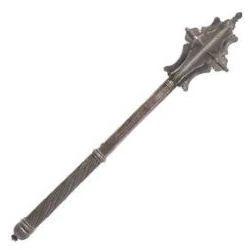
When you play a Forge Cleric, your equipment will not change too much. I recommend taking a Mace for your weapon, although you can take just about any other one-handed weapon you have proficiency with if you like them better. However, you should take a Shield as well.
This is because it gives you +2 AC while also acting as your holy symbol so you can use it to cast your spells. You’ll have Chain Mail armor when you start, but you should try to get Full Plate as early as possible. Then, you’ll likely stay with that until you get any magical armor to replace it.
Magical Forge Cleric Equipment
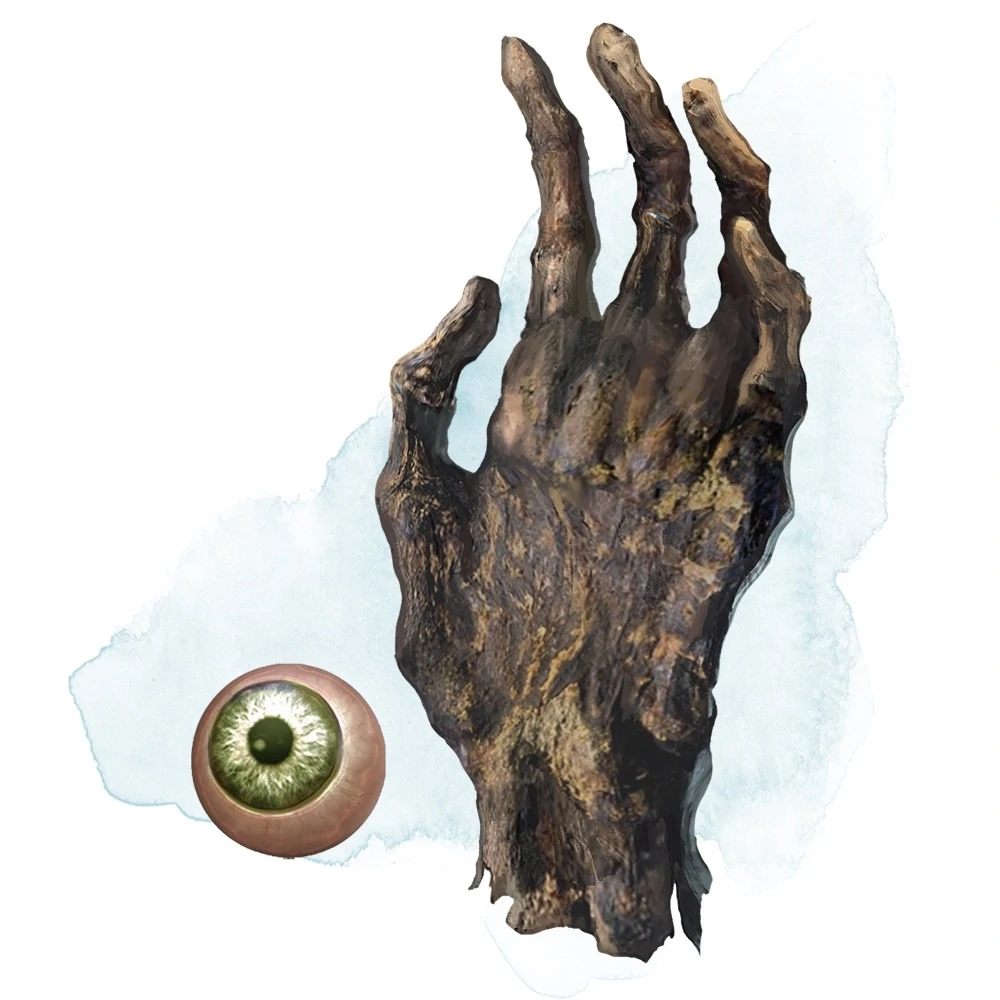
As you adventure throughout the world, you should also be trying to amass a collection of magic items as a Forge Cleric so that they don’t fall into the hands of forces that use them for evil.
Getting any magic item can be useful for you or can be given to other members of your party. However, you should keep an eye out for the following items that are especially strong for Forge Clerics.
Uncommon Magic Items
Clockwork Amulet
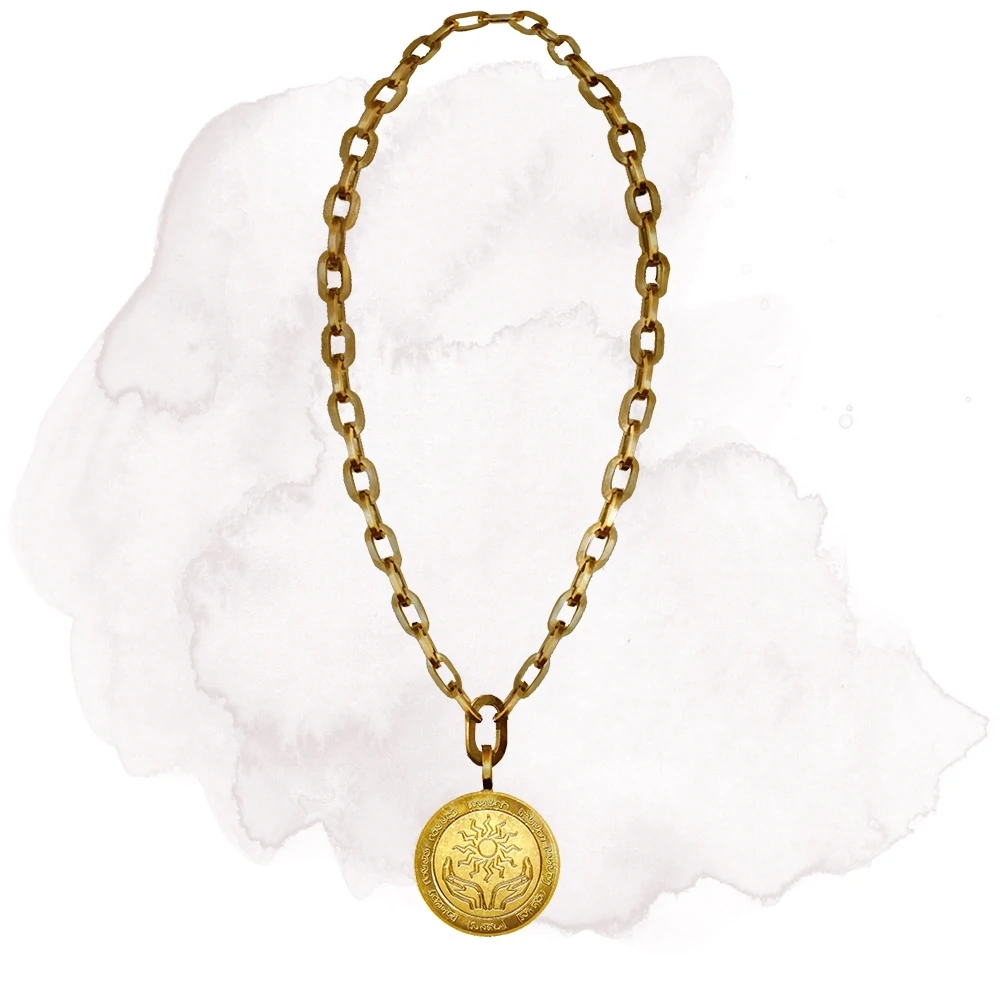
Book: Xanathar’s Guide to Everything
This item gives you a guaranteed ten on an attack roll once per day, which can be a helpful way to ensure you hit when you need to. Even better, it doesn’t have to be attuned to you, leaving your slots open.
Uncommon Magic Items
Adamantine Armor

Book: Dungeon Master’s guide
For some reason, Adamantine Armor costs less than Full Plate despite being magical and better, but either way, you should try and get it as early as possible to max out your AC and keep you from taking more damage during encounters.
Amulet of the Devout
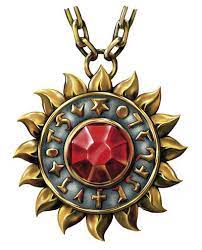
Book: Tasha’s Cauldron of Everything
The Amulet of the Devout is a must-have for any Cleric. It increases your spell attack modifier, spells save DC and gives you an extra use of Channel Divinity daily.
Getting this magic item will drastically raise your prowess on the battlefield, and I can’t recommend getting it enough.
Guardian Emblem
Book: Tasha’s Cauldron of Everything
This magical item is an excellent item for Defender characters. It can be attached to any shield or armor, and it can be the symbol of a deity, allowing it to count as your holy symbol.
The Guardian Emblem then has three charges that are recharged daily, which can be used to turn a critical hit into a normal one when it targets you or any creature within 30 feet of you.
Sentinel Shield
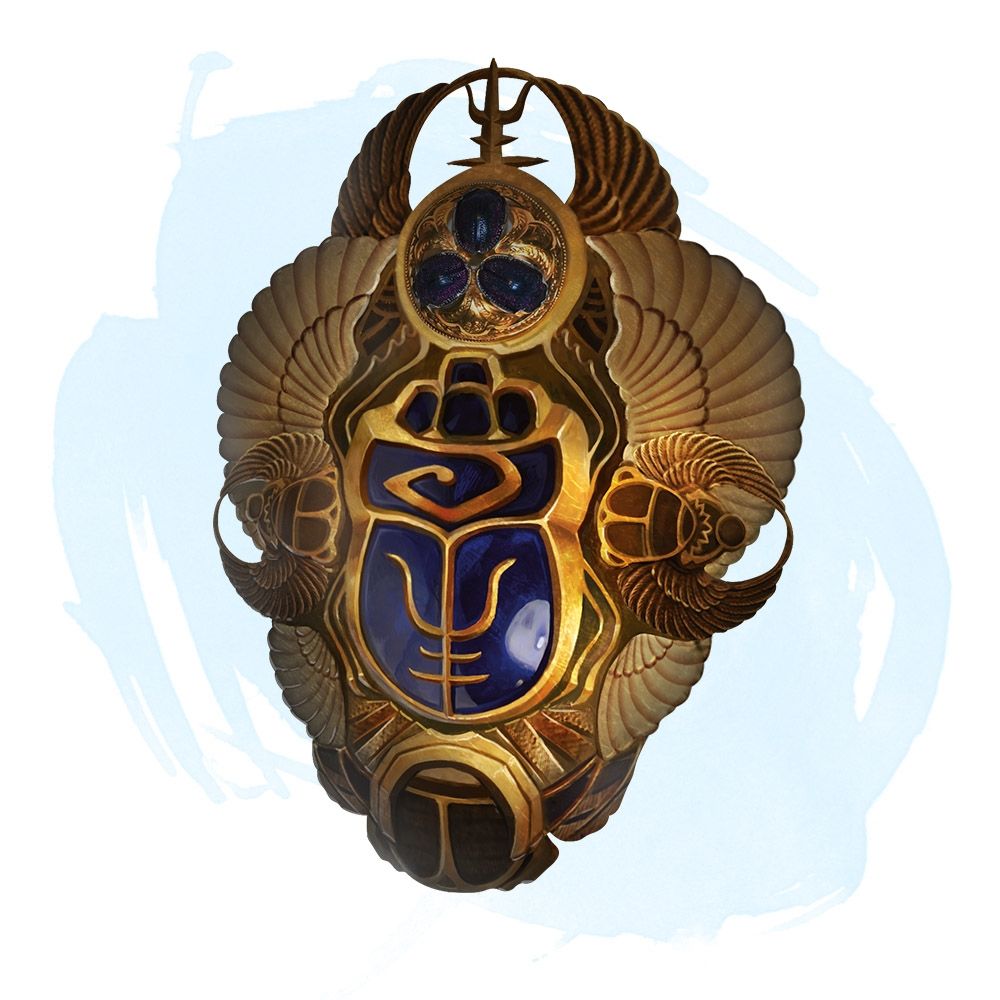
Book: Dungeon Master’s Guide
This shield will give you a healthy increase in your Perception, which will already be great because of your high Wisdom. It also comes with an advantage to your initiative rolls, which will help you get up to the frontlines to defend your party early on in combat encounters.
Rare Magic Items
Amulet of Health

Book: Dungeon Master’s Guide
This amulet will set your Constitution score to 19. If you get this early on, it can be helpful so that you don’t have to put ability scores into it and instead take some of the above feats.
Belt of Giant Strength
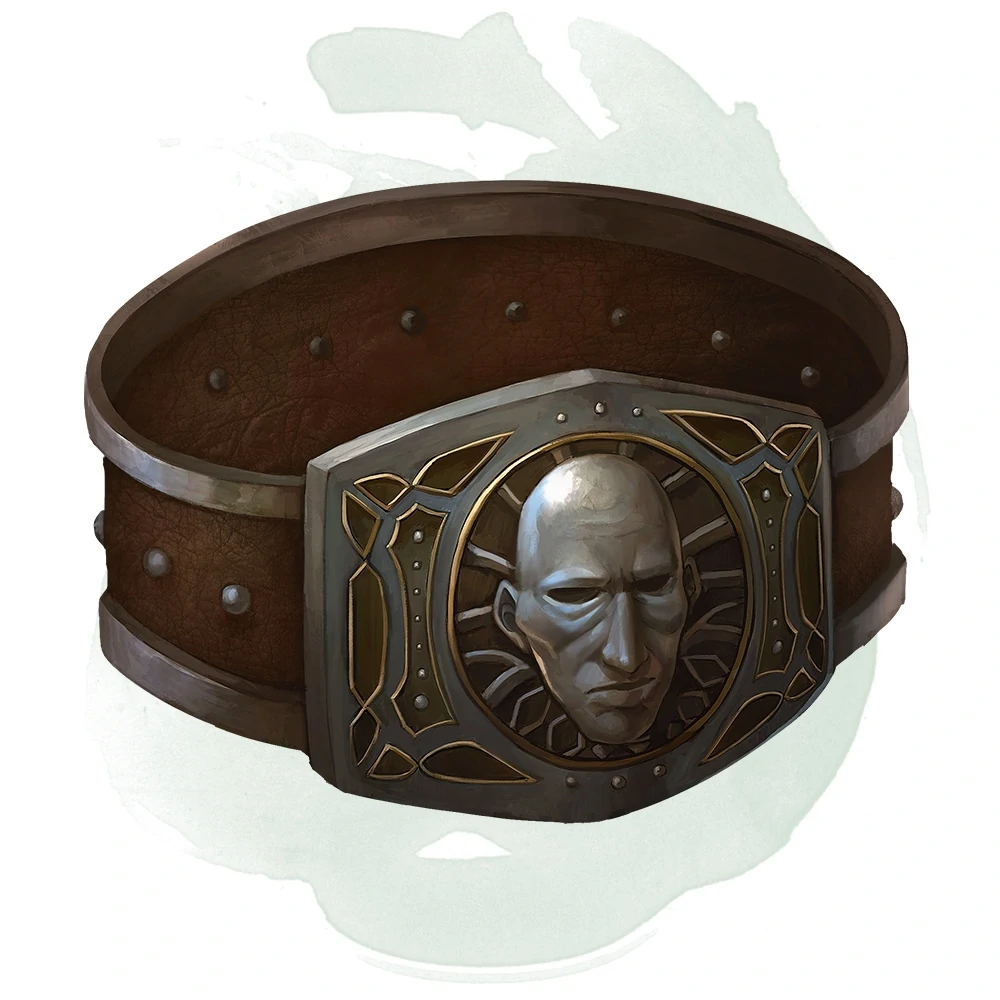
Book: Dungeon Master’s Guide
This magic item comes in various strengths, but the first one is the Hill Giant variant, which comes with a Rare rarity. This will increase your Strength to 20 or higher, allowing you to hold your own in melee combat in case there isn’t a great situation for magic.
Cloak of Displacement
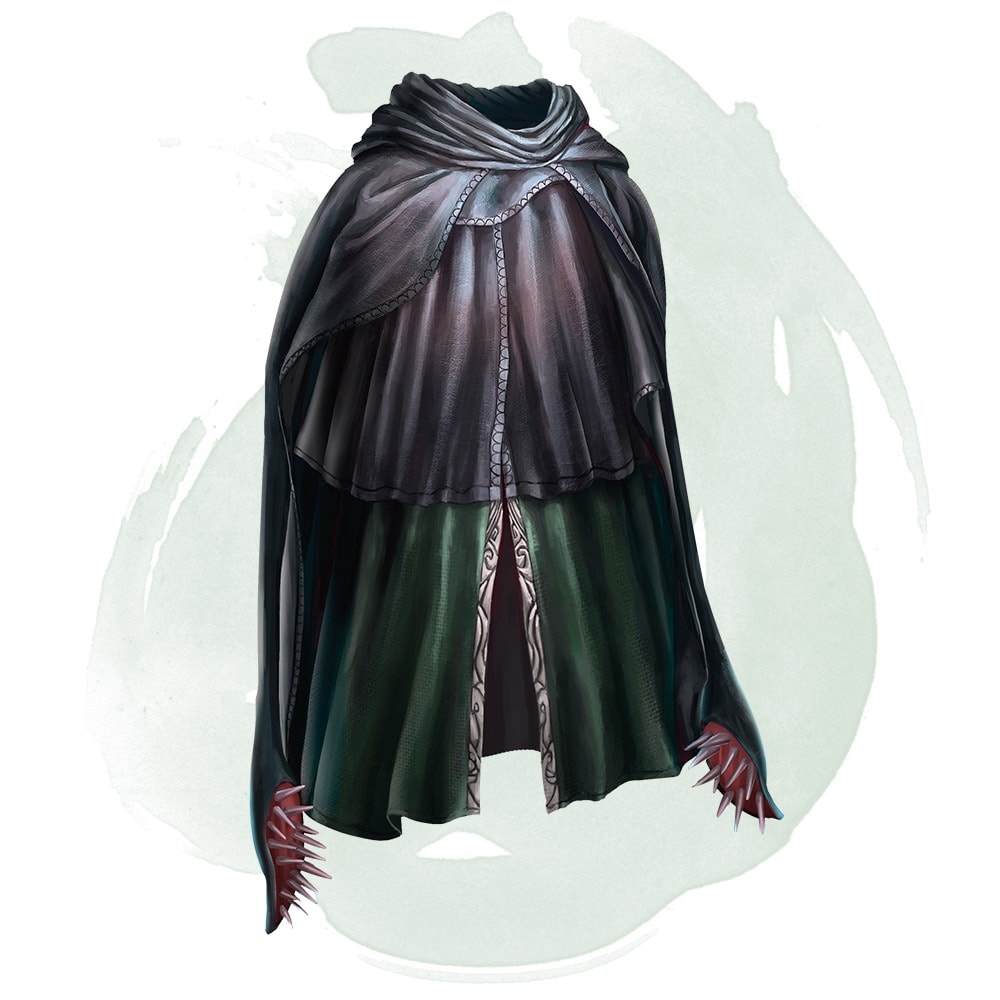
Book: Dungeon Master’s Guide
The Cloak of Displacement is one of the most powerful defensive items in all of 5e because it gives all targets a disadvantage on their attack rolls against you. This effect can be disabled with certain magics, but it still can play a massive role for any Defender character.
Ring of Evasion

Book: Dungeon Master’s Guide
This ring will help you succeed in saving throws, which is great for a Forge Cleric as your heavy armor and ability scores will leave you vulnerable to many of them.
Very Rare Magic Items
Manual of Bodily Health
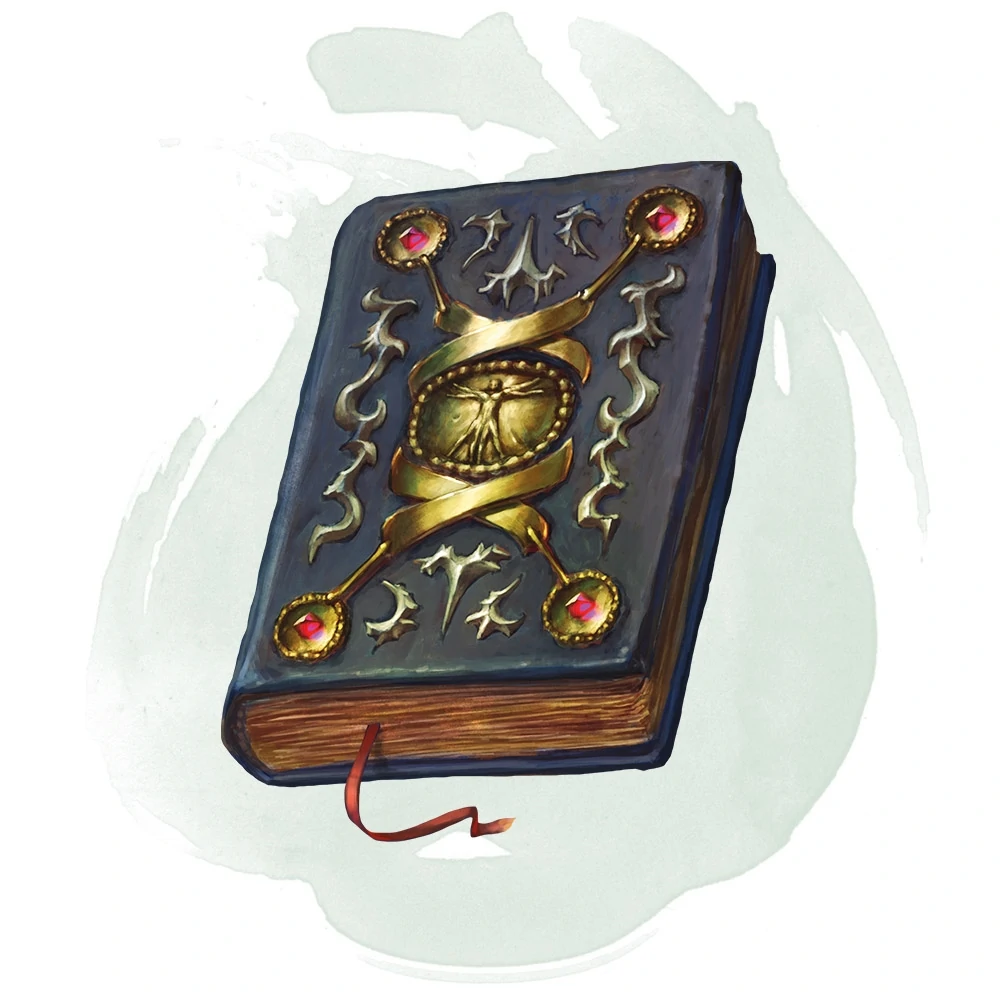
Book: Dungeon Master’s Guide
Getting your hands on this magical item will increase your Constitution by two and increase your maximum to 22. This can allow you to get up to a +6 modifier, but if you were using the Amulet of Health throughout the playthrough, your Constitution likely won’t be high enough for this to be worthwhile.
Tome of Understanding
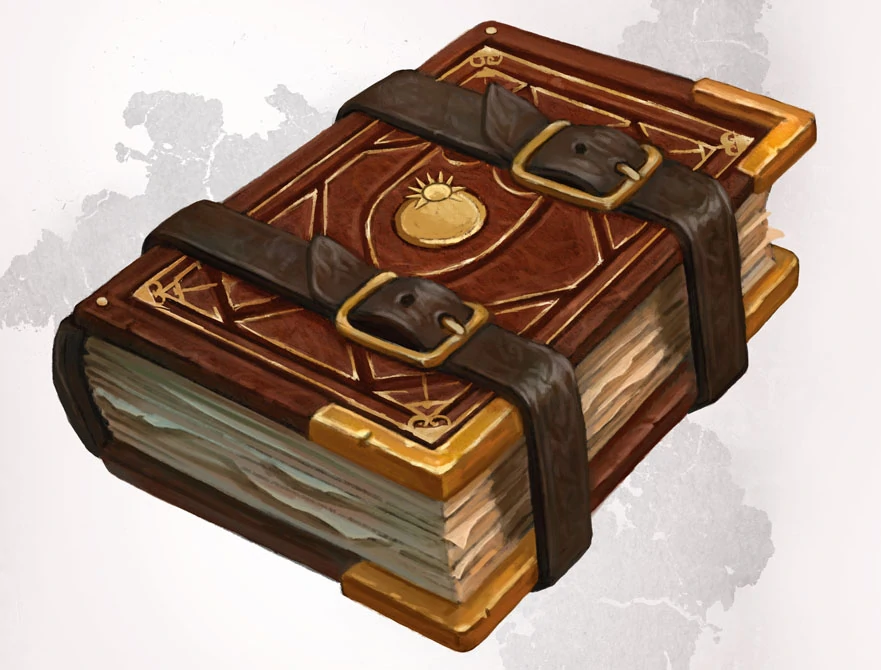
Book: Dungeon Master’s Guide
This item is the same as the Manual of Bodily Health above, but it increases your Wisdom, which will impact nearly everything your Forge Cleric frequently does.
Legendary Magic Items
Talisman of Pure Good / Talisman of Ultimate Evil
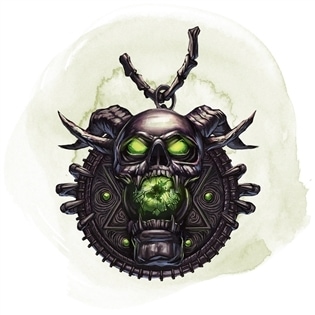
Book: Dungeon Master’s Guide
This item will not be as strong for you as a higher rarity Amulet of the Devout, but it still can be extremely strong. It will allow you to deal extra damage to creatures that touch it and increase your spell attack rolls by two if your Forge Cleric’s alignment is Good.
It also has seven charges that can be used to open a fissure under any evil creature, forcing them to make a Dexterity saving throw with a DC of 20.
If they fail the saving throw, they fall into the fissure and are destroyed. This can help you easily destroy late-game monsters, but once all the charges are used, it becomes useless.
How to Play a Forge Cleric
Roleplaying
When it comes to playing a Forge Cleric, you can play it in many different ways. I find it interesting to incorporate the Forge Cleric’s innate connection with the fire and the forge. This can be giving them a fiery temple, having them show a deep appreciation for craftsmanship, or giving them a constant desire to share their expertise with anyone who will listen.
Regardless of your character’s personality, you should make sure to give your Forge Cleric a deep appreciation for metalworking and, in particular, magical or unique pieces. Since your Cleric should be working to collect magic items to protect them, that should also show up in your roleplaying. I’ve found complimenting and inspecting the armor and weapons of other characters and players is an easy way to do this.
You also need to pay close attention to your deity whenever you play a Cleric, and the Forge Cleric is no different. Once you pick which deity your Cleric will pledge allegiance to, I recommend reading up about them to understand how that should impact your roleplaying. This means dropping their name in curses, knowing what tenets they would want you to uphold, and which deities or practices they strongly oppose.
Combat
Once your party gets into combat, you’ll have a very important role. As a Defender, it will be your job to get up in the front of the encounter to draw most of the attention of your enemies. This means that you’ll want as high of an Armor Class as you can manage to keep you on your feet, so if you can find any ways to boost that do so. To help, you can also find sources to give foes a disadvantage on attacks against you.
Once you’re in combat, you’ll want to make sure you do as much as possible to defend your fellow party members. This may mean putting yourself in more dangerous situations, but you’ll have more of an opportunity to recover from that damage than your more squishy friends will.
As a Forge Cleric, you’ll also have some strong offensive options. Like most Clerics, you will likely spend most of your turns using magic for attacks, but you will find situations where you can get more out of a melee attack, especially if you manage to get a magical weapon. Either way, you will have an arsenal of options to pick from, so make sure to analyze every situation and use the option that will have the most significant impact on the momentum of the encounter.
FAQs
Question: Is the Forge Cleric good in 5e?
Answer: Yes, the Forge Cleric is a very strong option for a Defender character, and it boasts a versatile kit that can react to any situation or encounter.
Question: Which Dungeons & Dragons supplement book is Forge Cleric in?
Answer: The Forge Domain for Clerics is in the Xanathar’s Guide to Everything book.
Question: Can Forge Clerics heal?
Answer: The Forge Cleric does come with some healing ability, but not nearly enough to be a party’s dedicated healer. Instead, I recommend using its healing options to stabilize unconscious allies or help keep yourself if necessary.
Conclusion
If you are looking for a Cleric Domain that will help you defend every member of your party, you’ll be hard-pressed to find one better than the Forge Cleric. The subclass also comes with some really fun mechanics and options to make the class your own and mix up your time playing. So, I can’t recommend picking up a hammer or mace, grumbling a quick prayer to Moradin, and embarking out on an adventure across the Forgotten Realms enough.
- Steel Defender 5e Guide - September 5, 2022
- Harengon 5e Guide - August 24, 2022
- Shambling Mound 5e Guide: The Most Terrifying Plant - August 21, 2022



